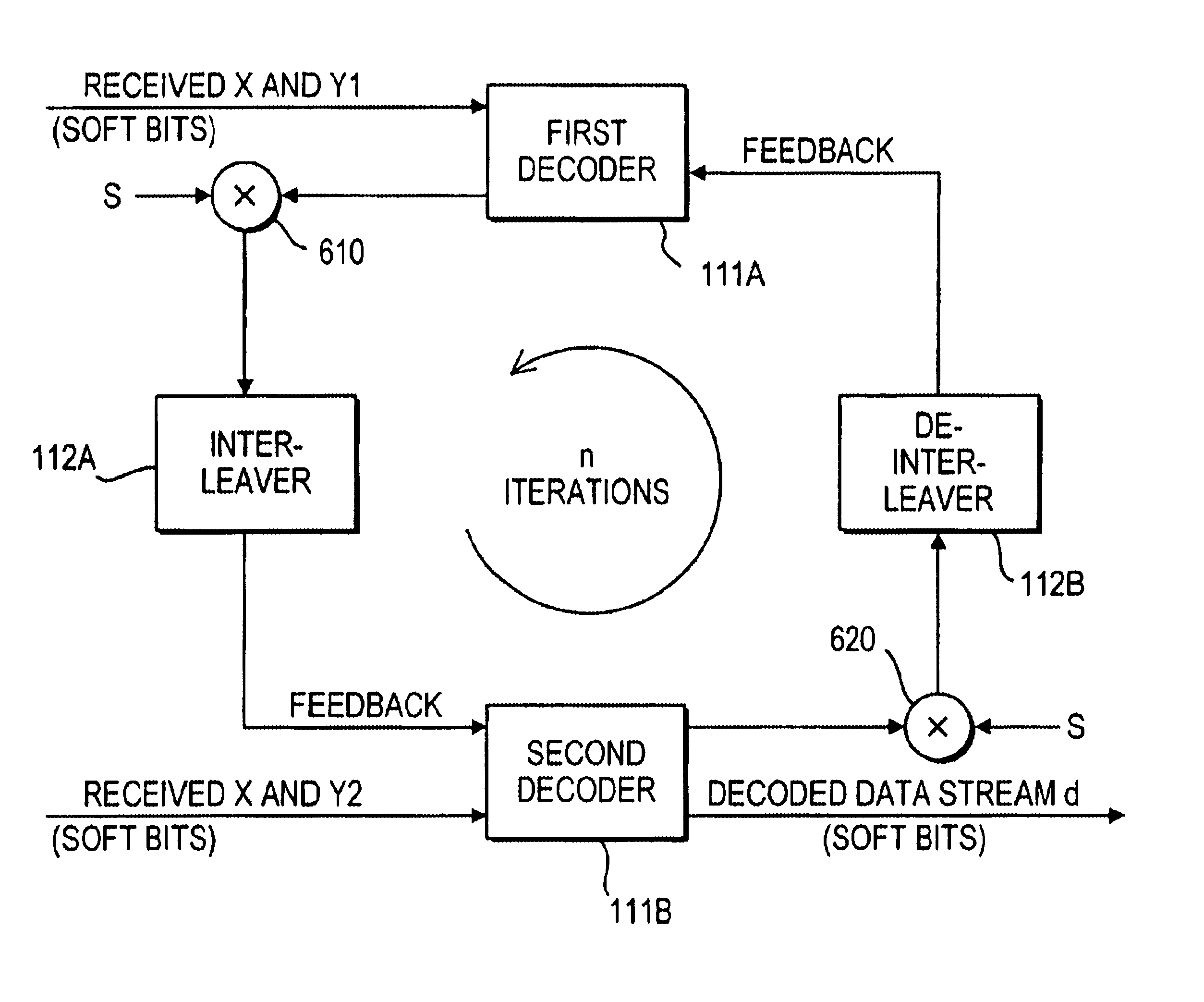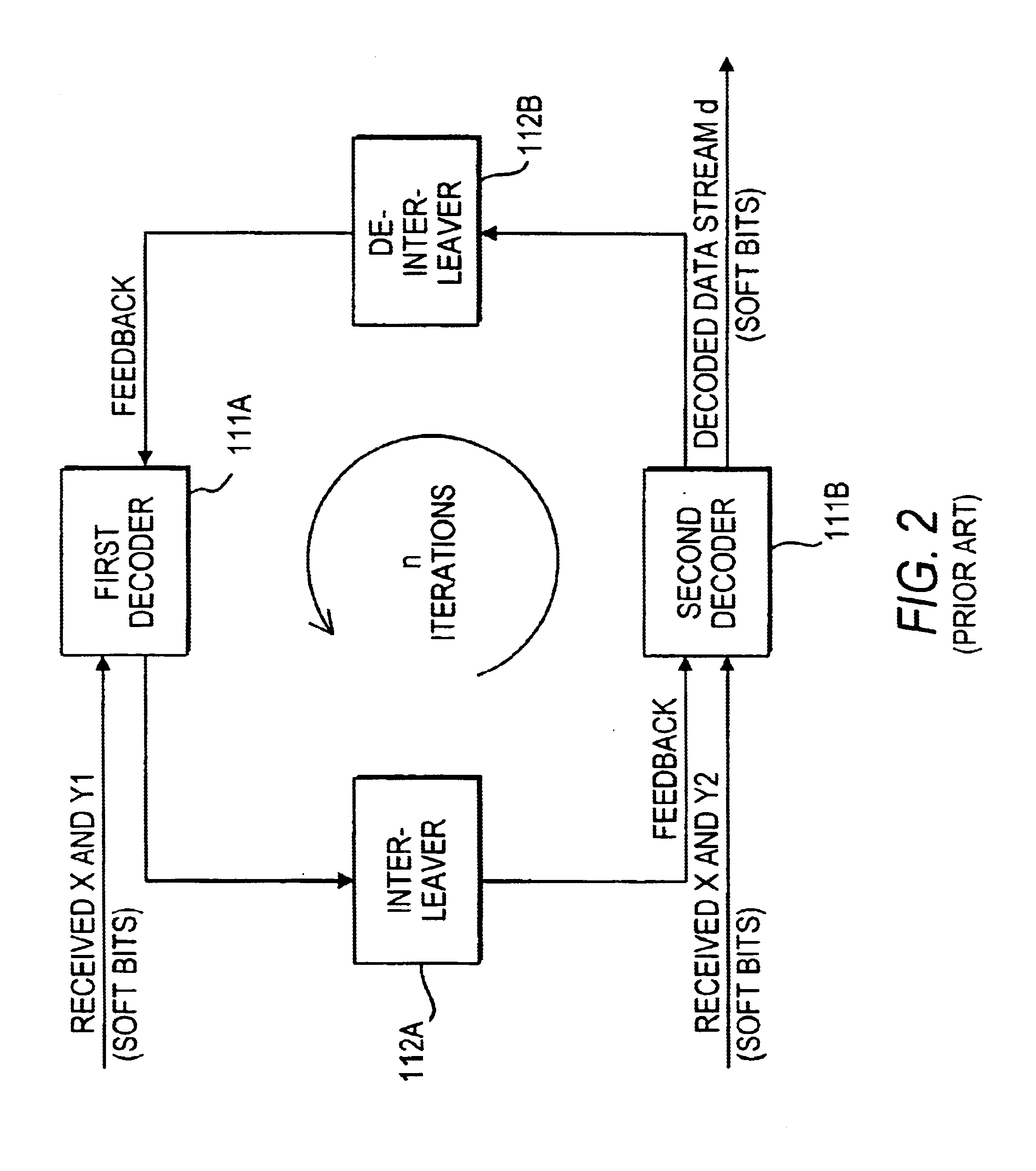Scaled-feedback turbo decoder
a turbo decoder and scaled-feedback technology, applied in the direction of coding, code conversion, fault response, etc., can solve the problems of not providing actual coding methods for arbitrarily high reliability, the most advanced error-control system, and the implementation of very complex hardwar
- Summary
- Abstract
- Description
- Claims
- Application Information
AI Technical Summary
Problems solved by technology
Method used
Image
Examples
Embodiment Construction
In communications conducted under difficult conditions, such as, for example, in space communication where a transmitter is inherently limited to low power and must transmit over vast distances and under conditions in which noise is likely to be received along with signal, it is routinely necessary to extract intelligence from signals that may be a mere fraction of a decibel above the noise level. Means of reducing error rates have been developed, including Turbo coding.
FIG. 1 is a block diagram of a Turbo encoder known in the art for encoding a datastream d to be transmitted via an airlink. The datastream d is encoded by constituent encoder 101A to produce coded stream Y1. The datastream d is also interleaved by interleaver 102 and then encoded by constituent encoder 101B to produce coded stream Y2. Multiplexed in the transmitted output are the datastreams X (a feedthrough of datastream d), Y1, and Y2. Since three streams are transmitted on the airlink to represent the one datastre...
PUM
 Login to View More
Login to View More Abstract
Description
Claims
Application Information
 Login to View More
Login to View More - R&D
- Intellectual Property
- Life Sciences
- Materials
- Tech Scout
- Unparalleled Data Quality
- Higher Quality Content
- 60% Fewer Hallucinations
Browse by: Latest US Patents, China's latest patents, Technical Efficacy Thesaurus, Application Domain, Technology Topic, Popular Technical Reports.
© 2025 PatSnap. All rights reserved.Legal|Privacy policy|Modern Slavery Act Transparency Statement|Sitemap|About US| Contact US: help@patsnap.com



